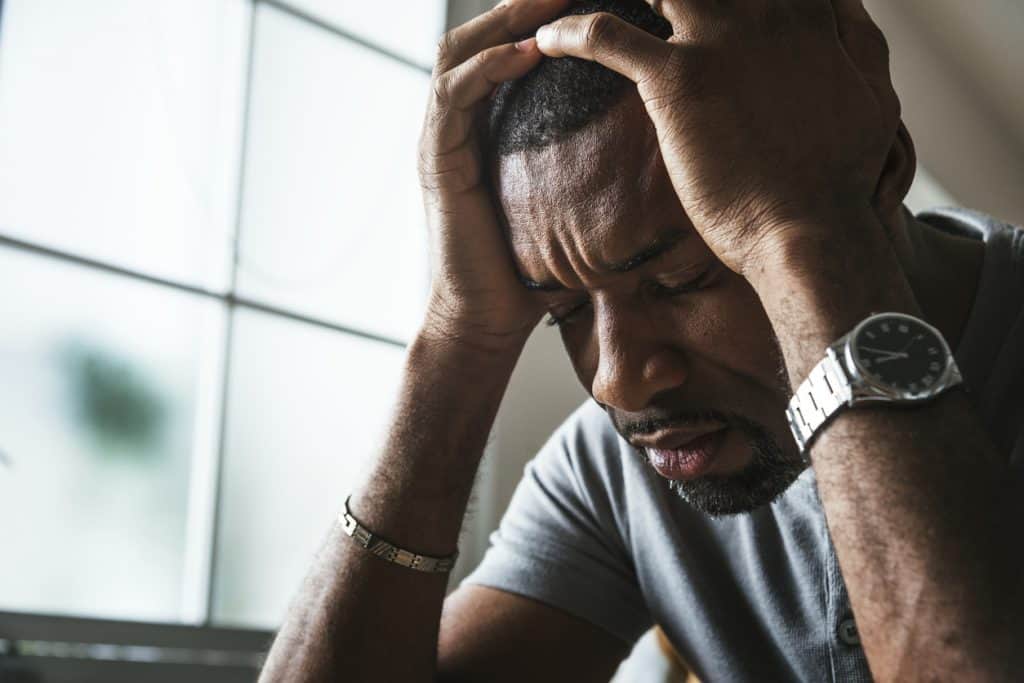Sometime around the mid 2000s, Internet speeds went from barely being able to upload high definition photos to capable of streaming movies without a single hiccup.
We moved from dial-up to DSL, to Broadband to Google Fiber, with speeds that can download an entire season of a TV show in 20 minutes.
Alongside this revolution of Internet speed came incredibly pro-social applications—things that have greatly helped our society progress. We can now talk to doctors via video and send prescriptions to our pharmacies in less than 10 minutes.
Of course, these lightning fast speeds brought some addictive things straight to our doors. We now have massive multiplayer games, music streaming services, and 24/7 access to social media.
We also have pornography. In fact, did you know that it’s estimated that 30% of Internet bandwidth holds porn?
Porn has been around for a long time, but the high speed Internet revolution has completely changed how humans can access it. It used to be a private vice. If you wanted to fulfill your desires and get your fix, you had to go in person to a shady video store (presumably in a long trench coat) and ask a real human being, “Where can I find ______?” or “How much does this cost?”
There was a physical price to asking about these things, and shame came along with that.
With the introduction of high speed Internet, two key changes were made in the pornography landscape.
First, the abundance and availability of porn rose tenfold.
Secondly, because of this, the public shame of purchasing porn disappeared.
The combination of these two elements has led to a massive influx of pornography use and the symptoms that come with viewing it.
We Can Now Hide Our Porn Addiction
There is a social price that comes with walking into a store and buying a porn magazine or VHS cassette.
When I was 16, I traveled to a foreign country. While there, I sneaked away from our camp group to buy a Playboy magazine, and let me tell you, it was terrifying. I had to nervously look the cashier in the face and give them money in exchange for a porn magazine, scared to death that I would somehow get in trouble for what I was doing.
I didn’t get in trouble, but there was plenty of shame I felt in what I was doing.
Today’s children no longer have to sneak out to buy a porn magazine or a VHS cassette. No, instead, they just pull out their smartphones and have instant, unlimited access to more naked women than their grandfather saw in his entire life.
Once we understand the uptick in the availability of the pornography, we can discuss the intensity of it.
Realism + Intensity
Pornography is not a recent innovation by any measure; the earliest depictions of sex go back to 5200 BCE in Germany. Porn has been around for a while, but hadn’t quite made its way into the home until the invention of the Internet.
The ease of access and abundance of it sets the stage for increased addiction.
According to Dr. Victor Cline, author of Pornography’s Affects on Adults and Children, the escalation of a pornography addiction manifests itself in four stages.
Phase One: Addiction—Once involved in pornographic materials, people keep coming back for more.
Phase Two: Escalation—Over time the addicted person requires rougher, more explicit, move deviant pornography to get their turn-on. This is roughly parallel to a drug addict’s patterns of substance abuse.
Phase Three: Desensitization—Material which was once viewed as shocking, illegal and repulsive now becomes necessary for a dopamine high.
Phase Four: Acting Out—The viewer may start acting out what they see in porn, which can be extremely violent and harmful to the other person. This is especially dangerous for young men who were first exposed to sex through porn.
When Will Pornography Stop Being a Problem?
Well, great. Now that we have massive amounts of pornography accessible from the privacy of our homes, how do we get the cat back into the bag?
I’m afraid we can’t, really.
Kids can access just about anything online, and it’s nearly impossible to completely block their access to the tech world, whether it be violent video-games, social media, or pornography.
However, you can build habits that will change their at-home habits. You can’t stop your child from consuming Pop-Tarts that are loaded with artificial ingredients, but you can easily avoid purchasing a box of Pop-Tarts and putting them in your pantry.
The same concept applies to pornography. No matter how hard you try to block it, your child may eventually find access. So, start killing these bad habits while young. Have the important conversations with your children. Install Internet blockers and accountability software like Covenant Eyes.
Your child will eventually grow up, move away to college, and learn that they can eat as many Pop-Tarts as they want and see whatever porn they like. The good habits you have instilled in them will remind them of what is right and help them to avoid temptation. We’re just creatures of habit, so start creating good habits now.
For the rest of us, it’s not too late to instill good habits in your own life. While pornography use and addiction is exploding, so are outlets dedicated to ending it. Will you step forward and lead the fight against ending porn?










Hayim Pinson, thank you for your article. I completely agree with the 4 phases. I would add that porn is progressive in nature as any addiction that stimulates the dopamine receptors. I was an addict for over 30 years and advanced from porn to massage parlors and prostitution etc. I have been in recovery for over 10 years and also am an advocate for speaking out against porn as well as assisting in healing of the underlying causes. My commitment is to the extent that I founded and organization called Road to Purity and now am involved full time with it.
I also think its important to add that while working on blocking porn and developing better habits for people of all ages, there also needs to be a plan of recover from the addiction. Taking away access does not solve the underlying problem as porn is really a symptom of a deeper problem that needs addressed. In general, it is dangerous for people to think that if they simply block access then they are “all good” and cured. Far from the truth.
Hayim, thank you again for your work.
Dann Aungst
Author, counselor, speaker
roadtopurity.com
You might wanna change that last line to :
Will you step forward and lead the fight against porn?
or
Will you step forward and lead the fight to end porn?
or maybe
Will you step forward and lead the fight for ending porn?
I appreciate the efforts made by Covenant Eyes in bringing awareness to this important issue. Unfortunately Africa is sooner catching up on this bad habit as more people get to access high speed internet. I made a decision to do something in my community and started a whatsapp support group forum where we offer resources and counselling. I’m hoping the church in Africa will take a more proactive role in dealing with this issue.
Hi Arthur!
Thank you for sharing the struggles you are facing in churches in Africa. Although we are a United States based company, our software is available worldwide! In addition to the support group forum you have set up (amazing, by the way!), I would encourage you to try out our Screen Accountability software. It has proven to be an incredibly effective accountability tool in the fight against pornography.
God bless!
Moriah